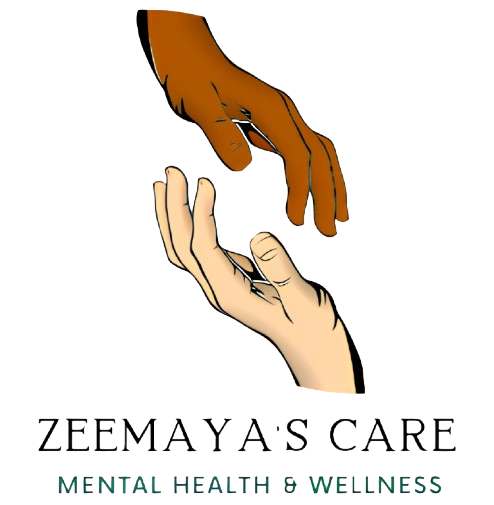Introduction
When my daughter turned 13, I will be honest and say panic set in, remembering how well-meaning friends, family, and close loved ones had set the stage of what to expect during the teen years. As a mother and a mental health provider, I often ask myself, “Am I showing up the best way I can for my daughter?”
Teenage years are often described as a whirlwind—an intricate dance between childhood and adulthood, filled with new experiences, challenges, and milestones. But beneath this dynamic period of growth lies a reality that is often overlooked or misunderstood: teen mental health. In recent years, growing awareness around mental well-being has shed light on the unique pressures teens face, yet the journey toward understanding and supporting adolescent mental health remains an ongoing challenge.
Here in the United States, awareness around adolescent mental health is steadily increasing. At ZeeMaya’s Care, we provide a supportive, unbiased space where teens across Maryland, Washington D.C., and Virginia can express themselves freely and access the help they need without judgment.
The Landscape of Teen Mental Health
Adolescence is a time of rapid physical, emotional, and social changes. Hormonal shifts, academic pressures, identity exploration, and evolving peer and family relationships all converge during this critical stage. According to the World Health Organization, one in seven adolescents globally experiences a mental health disorder.
Here in the U.S., many families are seeing these struggles firsthand—whether it’s depression, anxiety, or behavioral challenges. These issues must not be dismissed as “just a phase.” Without proper support, they can impact school performance, relationships, and long-term well-being.
Common Mental Health Disorders in Teens
Depression
Teen depression often manifests as persistent sadness, irritability, loss of interest in activities, changes in sleep and appetite, and feelings of worthlessness. Unlike occasional mood swings, clinical depression may last weeks or months and interfere with daily life.
Anxiety Disorders
Anxiety is a normal part of adolescence, but for some, it can become overwhelming. Generalized Anxiety Disorder, social anxiety, and panic disorders are among the most common, characterized by excessive worry, physical symptoms like heart palpitations, and avoidance of social situations.
Behavioral and Emotional Disorders
-
ADHD (Attention-Deficit/Hyperactivity Disorder)
-
ODD (Oppositional Defiant Disorder)
-
Conduct Disorders
These can surface during the teenage years, often presenting as impulsivity, defiance, and difficulties with authority figures.
Eating Disorders
Conditions like anorexia nervosa, bulimia nervosa, and binge-eating disorder often emerge in adolescence, driven by a complex interplay of genetic, social, and environmental factors.
Substance Use Disorders
Experimentation with drugs and alcohol can quickly spiral into dependency, particularly when used as a coping mechanism for underlying emotional pain.
Contributing Factors to Teen Mental Health Issues
Biological Influences
-
Genetic predisposition
-
Neurobiological changes during puberty
Environmental Stressors
-
Academic pressure
-
Bullying and peer pressure
-
Family conflict
-
Socioeconomic challenges
Social Media and Technology
Social media can fuel comparison, anxiety, and feelings of inadequacy, despite its potential to connect.
Stigma and Lack of Awareness
The fear of being judged or misunderstood can prevent teens from seeking help or even talking about their struggles.
Recognizing the Signs
Early identification is critical. Look for:
-
Withdrawal from friends and family
-
Sudden academic decline
-
Loss of interest in activities
-
Changes in sleep or appetite
-
Mood swings or irritability
-
Expressions of hopelessness
-
Risky behaviors or self-harm
-
Talking about death or suicide
Approach teens with empathy and without judgment. Open a dialogue and make it clear they are not alone.
Professional Support in DC, MD, and VA
At ZeeMaya’s Care, we connect teens with compassionate, qualified professionals in the Washington D.C., Maryland, and Virginia areas. We believe in creating a safe, stigma-free space where young people feel heard and supported.
Communication and Connection
Building trust is key:
-
Listen actively
-
Avoid immediate problem-solving
-
Validate emotions
-
Show unconditional love
Professional Help
Sometimes, therapy, counseling, or medication is necessary. Encourage teens to get help—and stay involved in their healing journey.
Building Resilience
Teach teens how to:
-
Problem-solve
-
Manage stress
-
Practice mindfulness
-
Engage in fulfilling activities (sports, art, volunteering)
Promoting Healthy Habits
-
Encourage healthy sleep routines
-
Support balanced nutrition
-
Promote regular physical activity
-
Limit screen time and promote offline connections
Breaking the Stigma
-
Share personal or public stories of recovery
-
Normalize mental health conversations
-
Educate teens about mental well-being
The Role of Schools and Communities
Schools and communities play a vital role by:
-
Providing mental health education
-
Offering counseling and support programs
-
Supporting peer connection through groups and extracurriculars
When Crisis Strikes
If a teen is in immediate danger:
-
Do not leave them alone
-
Remove access to harmful items
-
Call the 988 Suicide & Crisis Lifeline
Looking Ahead: Hope for the Future
The conversation around teen mental health in the U.S. continues to expand. With growing awareness, education, and support, we can empower teens not just to survive—but to thrive.
At ZeeMaya’s Care, we are committed to breaking the stigma, building resilience, and offering teens across the DMV the tools and support they need to build a brighter future.

